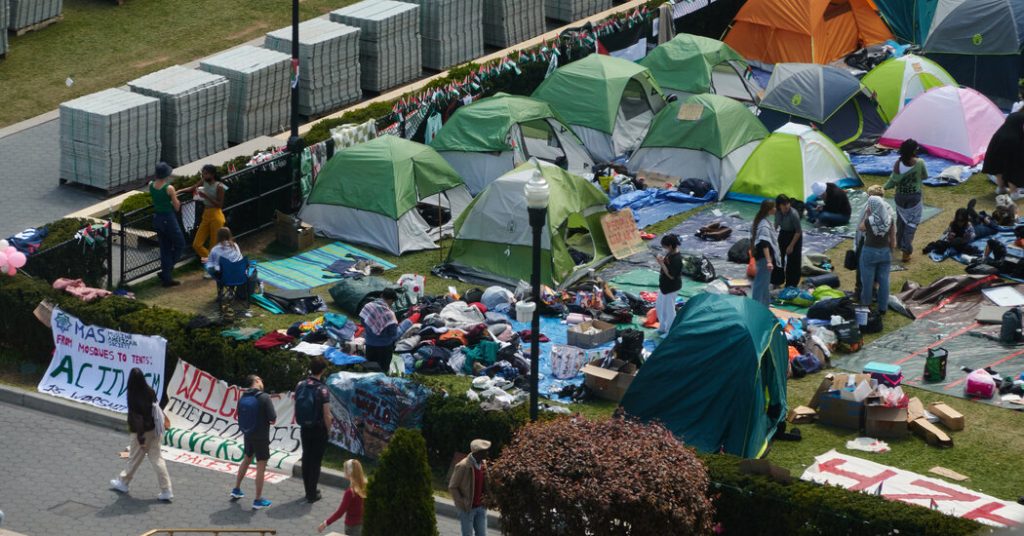Columbia University recently announced that it had begun to suspend students who had not left a pro-Palestinian encampment by the designated deadline. The university attempted to strike a balance between avoiding police involvement to remove the encampment, while also asserting that the protest must end. Despite protests and confusion on campus, most of the protesters began to disperse by 4 p.m., leaving several dozen students and about 80 tents inside the encampment. Faculty members donned safety vests and stayed behind to ensure the students’ right to protest was respected.
In an effort to gradually disband the nearly two-week-old encampment before the university’s May 15 graduation, Columbia decided to suspend students who remained in the encampment after 2 p.m. However, the hundreds of other students who came to support the encampment were not subject to suspension. The core group of student protesters vowed to stay, refusing to move unless compelled by force. The protesters demanded divestment from companies linked to the Israeli occupation of Gaza and expressed disappointment in the university’s lack of concessions.
Similar pro-Palestinian demonstrations have taken place on campuses across the country, leading to arrests of hundreds of students. At NYU, disciplinary processes were initiated against students who did not disperse from an encampment. At Princeton University, student protesters inside a building were detained, and at Rutgers University, neon-colored tents were set up on the campus lawn. Columbia urged students to voluntarily leave the encampment to prepare for upcoming events, acknowledging that police intervention could inflame tensions.
Protests at Columbia inspired demonstrations on campuses nationwide, each with unique challenges and responses from administrators. The university faced backlash following police intervention in a previous incident, which led to arrests and protests. Columbia indicated that another police intervention would be counterproductive, preferring to engage with students in a disciplinary manner. An impasse in negotiations between the university and student protest leaders prompted Columbia to distribute notices to encampment participants, offering a chance to avoid punishment by signing a behavior agreement.
Protesters gathered to continue their demonstration despite the threats of suspension and disciplinary action. While some students left the encampment quietly, others joined rallies or protests in support. The demonstrations were viewed as inspiring by some students but had taken on a hostile tone that did not align with the goal of peace, according to one observer. Friction between protesters and observers with differing perspectives was noted, highlighting the complexities of the situation on campus.
The pressure on Columbia continued, as a Jewish student filed a lawsuit accusing the university of providing a second-class education by failing to ensure a safe environment for Jewish individuals. Additionally, 21 members of Congress wrote to university administrators expressing frustration over the ongoing encampment disruption. The protests at Columbia underscored the challenges of managing student demonstrations while upholding academic integrity and ensuring a safe and inclusive campus environment.


